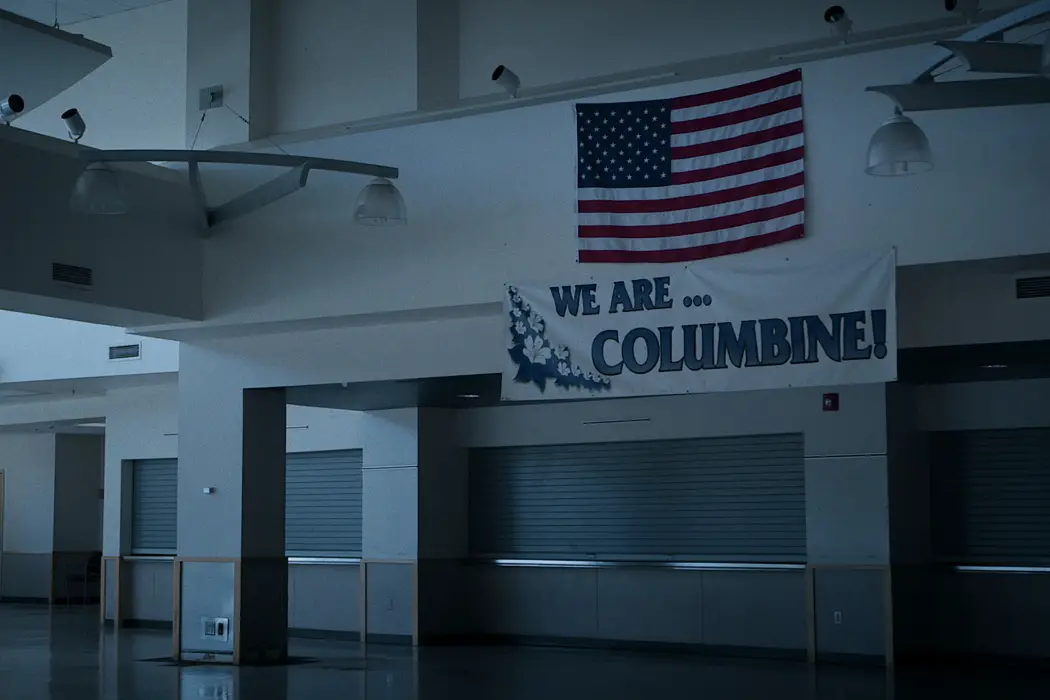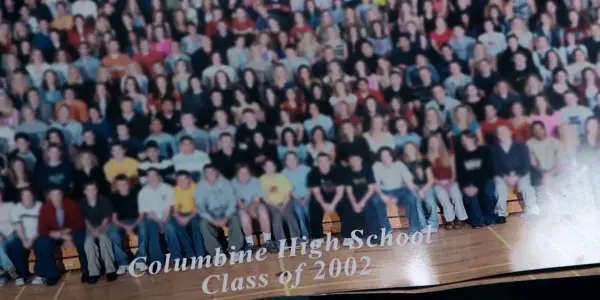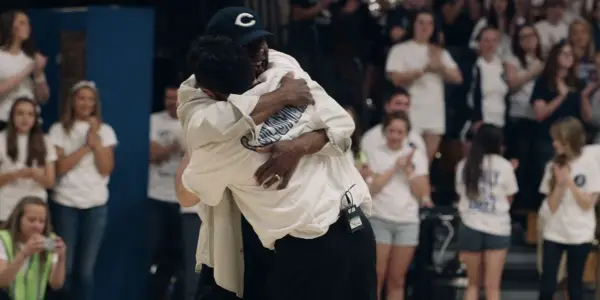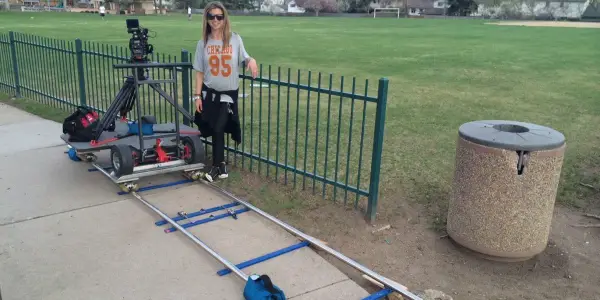WE ARE COLUMBINE: A Documentary Capturing The Strength Of Community & Individual

Stephanie Archer is 39 year old film fanatic living in…
Unfortunately, school shootings, and mass shootings in general, have become a fairly common occurrence throughout our society and throughout the world. Many have begun to become numb and desensitized to the horror with each passing event, policies remaining unchanged and further loss of life heartbreaking. While this may feel so common place today, on April 20, 1999, our country stood still as we attempted to grapple with the unthinkable – a school shooting at Columbine High School in Littleton, Colorado.
Many citizens across our nation found themselves glued to their television sets, trying to understand the horror that was unfolding before them, trying to sort through the rapid fire of information – much of which would turn out to be inaccurate. There are moments in history that will stick with you, that you remember long after the years have passed. The shooting at Columbine is one of them. And in the midst of cries for change and an acceleration of violence, Columbine stands strong as they prepare to commemorate the 20th anniversary of that fateful day.
The Class of 2002
We Are Columbine seemed to branch into its own category of film as it allowed its interviewees to tell their story, to connect with the camera. It was different because the therapy, support, relief, sadness and trauma was not limited to the individuals on screen, but to the one behind the camera as well. There is a unique connection to all members retelling their story, “their Columbine”, opening old wounds and embracing a returned vulnerability. With every passing detail and layer pealed away from each individual, We are Columbine sinks deeper and deeper into your soul, a piece of it sticking with you when the film has ended.

Class of 2002 students Gustavo D’Arthenay, Zach Martin, Jaimi Norden and Amy Staley, along with teacher Kiki Leyba and principal Frank DeAngelis, come together, each in their own vignettes, recall the moments leading up to the events, the shooting, the aftermath and the struggles they faced on their way to recovery – an ability to live their lives in the face of the tragedy they carry with them. As each of the former students return to Columbine to take their places, reenacting that day for the camera, there is a cold and eerie calm that comes back to them, the moments from April 20, 1999 raw and fresh.
Each of these students were at the end of their freshman year at Columbine, they started their high school year with a tragedy and had its consequences follow them to graduation. Behavior that may have been given a warning before was now handled more swiftly and harshly, many of the students coming to Principal DeAngelis commenting on how the school now felt like a prison. They were angry at what had happened to them, and angry with the fallout – all of which was out of their control. There were not student walk outs, no cries on the steps of the capital, instead a march to move forward, to survive and to graduate and get out of there.
Using the Class of 2002, which director Laura Farber also hales from, brought a unique continuity to We Are Columbine. There was a sense of closure and full acceptance of knowledge. If you wanted a perspective on what happened that day and the days that followed, these are the individuals best able to provide that insight. While many in upper classes were able to find their escape sooner, enter the world, leave, the Class of 2002 had to see everything pass in its entirety, there graduation bringing a sense of closure to the community, the school and, in part, themselves.
Strength
One of the greatest moments We Are Columbine was hearing the Columbine cry during a pep rally both before and after the shooting – “We Are Columbine”. The sight and sounds of this moment resonate throughout the documentary, punching out so many examples of strength throughout We Are Columbine. Most obvious, yet deserving every bit of recognition, is the strength exhibited by Farber, Kiki, Gus, Zach, Jaimi, Amy and Frank. Their bravery to return to the school and to the memories of that day is something that should be commended. It takes true strength to return to that which scares us most.

The strength of the community, Zach recalling how fellow citizens of Little Rock would greet each other with a hug and a question, not “are you okay,” but “how are you doing”. The fact that Zach returns each and every school day to Columbine, now as a coach, speaks to the strength and support of the community and school. He is one of 5 students from that day that have returned to take up ranks in the administration.
Strength in the teachers is breathtaking as well, who not only had to be strong and carry on for themselves, but for their students as well. Kiki discusses how sometimes in a class, he couldn’t wait for his students to leave the classroom, the moment they were gone turning off the lights and hyperventilating on the floor behind his desk. Hiding his moments of pain and trauma and standing strong for his students. Principal DeAngelis spoke of the need to select a new fire alarm sound and a new class bell, those sounds playing through the entire shooting now a trigger for students. As difficult as it was, sometimes finding it necessary to leave his office to find the release he needed, he would listen to a variety of sounds to find the right ones that would protect his now anxious school full of survivors. He even speaks of the trouble with crafting a new school menu as many remembered chinese food was on the menu the day of the shooting. They didn’t have to come back to the school when it reopened, or the temporary one that housed them, but they felt they needed to – for themselves and the students.
Recovery
There is an interesting concept Kiki brings up, experiencing it first hand. Society seems to view trauma as concentric circles. Those within the circle closest to the event are the most damaged. Those branching out further away are less so. Those in the parking lot even less, and those who were home sick that day have none. To have this societal perspective spoke from the voices of those who have had to experience it is disheartening and damaging to the recovery of those who suffer and have experienced what these individuals went through.

Pain is pain, trauma is trauma. It does not matter where you were that day, it reached you and it affected you. There is no formula, no equation to say how you should feel. You just do. It is important to remember this as you listen to each story, visualize each moment they recall. There is no force to push forward, you have to heal at your own pace and find means of coping with those you struggle with. And as Kiki says, you can if you take care of yourself and give yourself the time to do so.
We Are Columbine gives an interesting and insightful perspective into the recovery these individuals went through, and where they came out on the end. One a nurse, another a social work, and one finding strength through art, while the remaining three found strength in returning and being there for students, they each had their own journey, their own struggles and their own “Columbine”.
Perspective
Perspective – a viewpoint that is unique to each and every individual. As Gus speaks to the camera about “his Columbine”, standing in the room he and fellow classmates hide in for four hours, he reiterates,”everyone has their Columbine”. As you listen to each individual recall the horrors of the day, each person has a different location in the school they were at the time the shooting broke out, different things they saw. Different fears and thoughts when the idea of death found them in what is suppose to be the safest place. They each remember different details – the moments leading up to the shooting some more detailed than others. They remember things they said, or didn’t, motions and sounds. Each person experienced Columbine in their own way, each carrying a different shaped scar within them.

We are even, in the slightest of ways, given the perspective of Laura Farber, the film’s director. Having been witness to those around her, as well as experiencing her own aftermath of the shootings, she continues to bare witness, giving her former classmates a platform to stand on, to tell their story. The sensitivity in the handling of the filming, the music, visuals and editing all resonate from Farber‘s perspective, giving her a unique ability for her former classmates, teacher and principal to talk to her. Her perspective creates a safe and welcoming environment – one any other director may not have been able to create.
There is also a more modernized retrospective perspective in the handling within the documentary that speaks to the power of survivors and the current trend in the reporting and coverage of school shootings. This is about the survivors and their journey in the last 20 years, and such, there is no graphic material of what occurred inside, the shooters are not named, and the selections of news broadcast from that day are limited to necessary footage. Today, it is becoming customary to refrain from naming the shooters in these events, a refusal to give the individual power. The press is hot to be the first to break the latest, yet while not always accurate and with response reporting, sometimes the only footage you need are the straight forward facts.
We Are Columbine: Conclusion
Many will ask why there is a need to rehash these events time and time again. Why do we need to hear it? Because these individuals deserve to have their voices heard, their stories told. We can not forget that it happened, as much as many wish we could. It happened. And from this one shooting alone, we have learned better methods of first response active shooter tactics that have unfortunately needed to come into play for the future. The aftermath of grief and PTSD, as well as the methods of treatment, have had to re evaluated and reunderstood to provide the most effective forms of comfort, relief and help. Also unfortunately necessary 20 years later.
Most importantly, in a time when those affected most are standing up to have their voices heard, it is important to give the chance to those who may have been unable to in the past. No matter how much time has gone by, their trauma matters, their journey to get where they are matters.
Because they are Columbine. We are Columbine.
We Are Columbine got limited release on March 26th. Find screenings here.
Does content like this matter to you?
Become a Member and support film journalism. Unlock access to all of Film Inquiry`s great articles. Join a community of like-minded readers who are passionate about cinema - get access to our private members Network, give back to independent filmmakers, and more.













